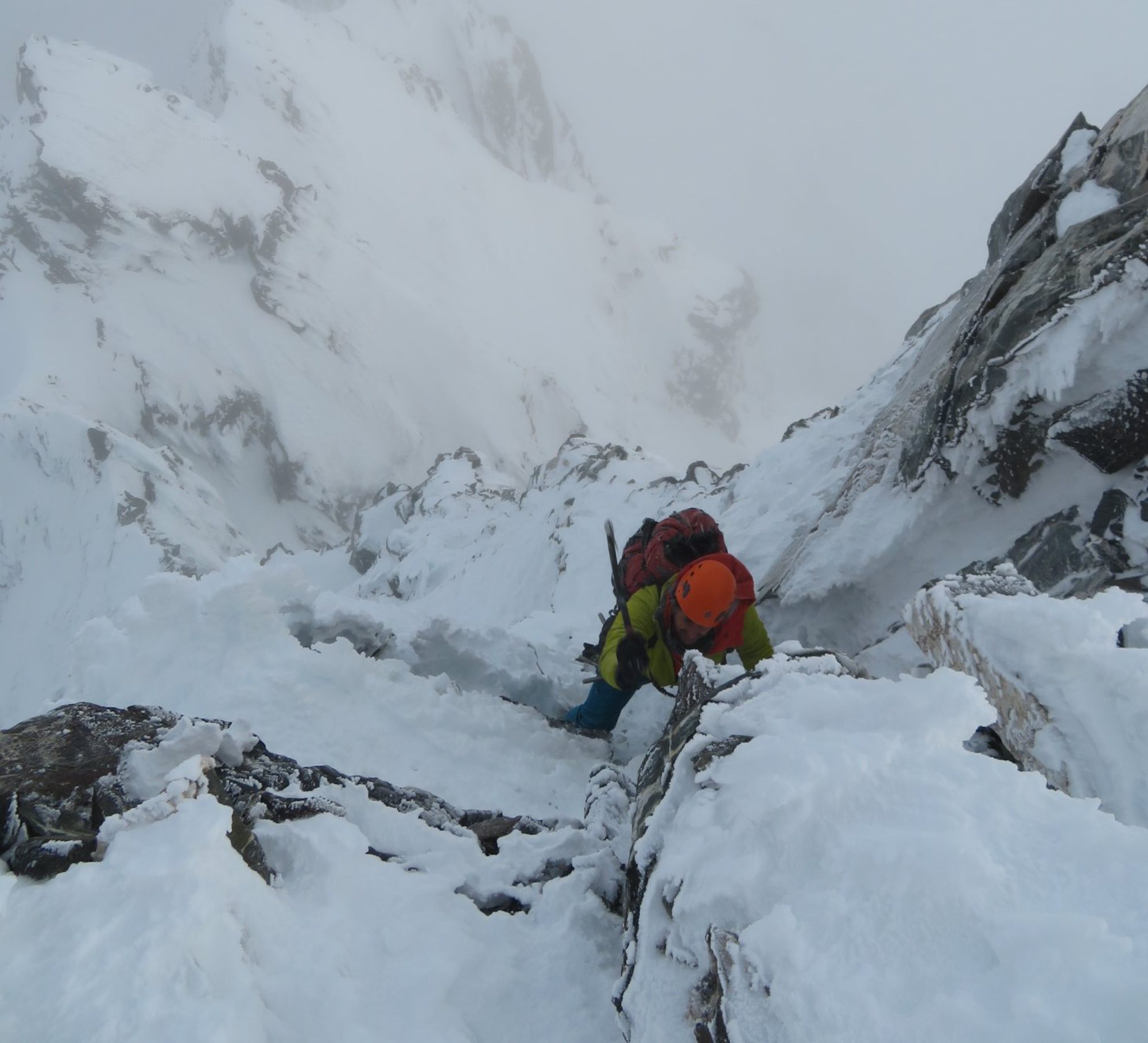After finishing my final exams for university, I travelled to New Zealand for 5 weeks in December 2013 and early January 2014. This was a trip I had been planning all year, and was to be my introduction to alpine climbing. I began this journey by doing two 6 day skills courses in Aoraki/Mt Cook National Park.
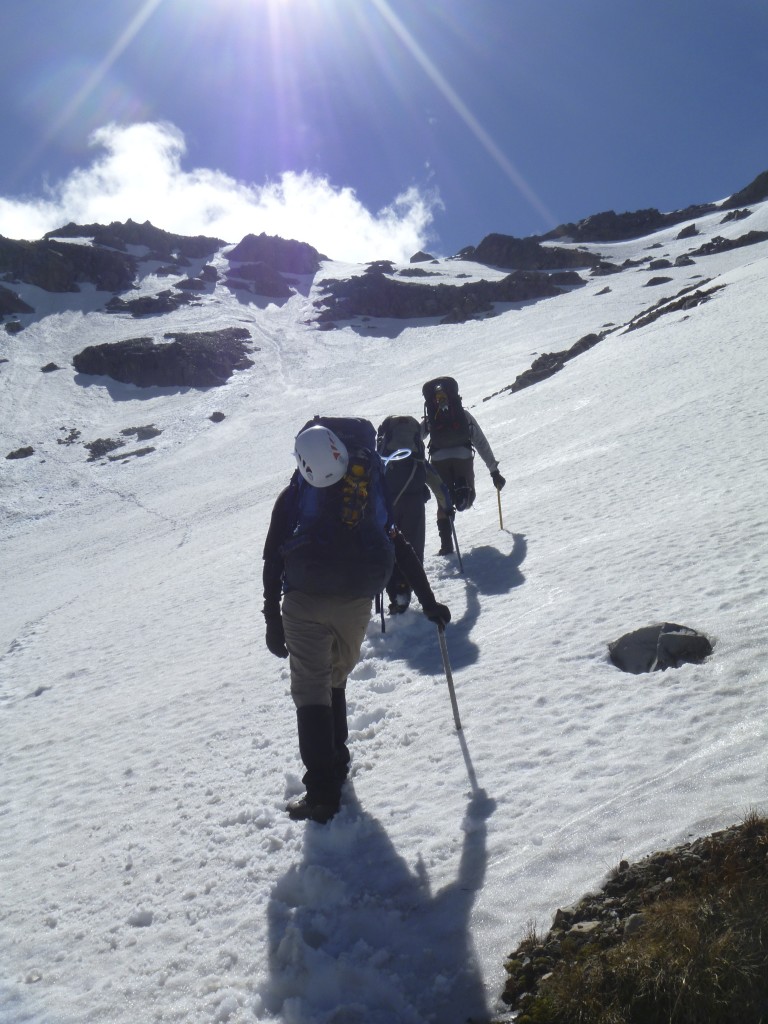
The first six day course was based out of Caroline Hut. I joined a group of four clients, and we were instructed by the reputable Paul Aubrey. We were lucky to have good enough weather to spend 5 out of the 6 days out in the field. On the first couple of days we practiced self-arresting, snow anchors, improvised belay techniques, and got used to our gear and moving around in the alpine environment.
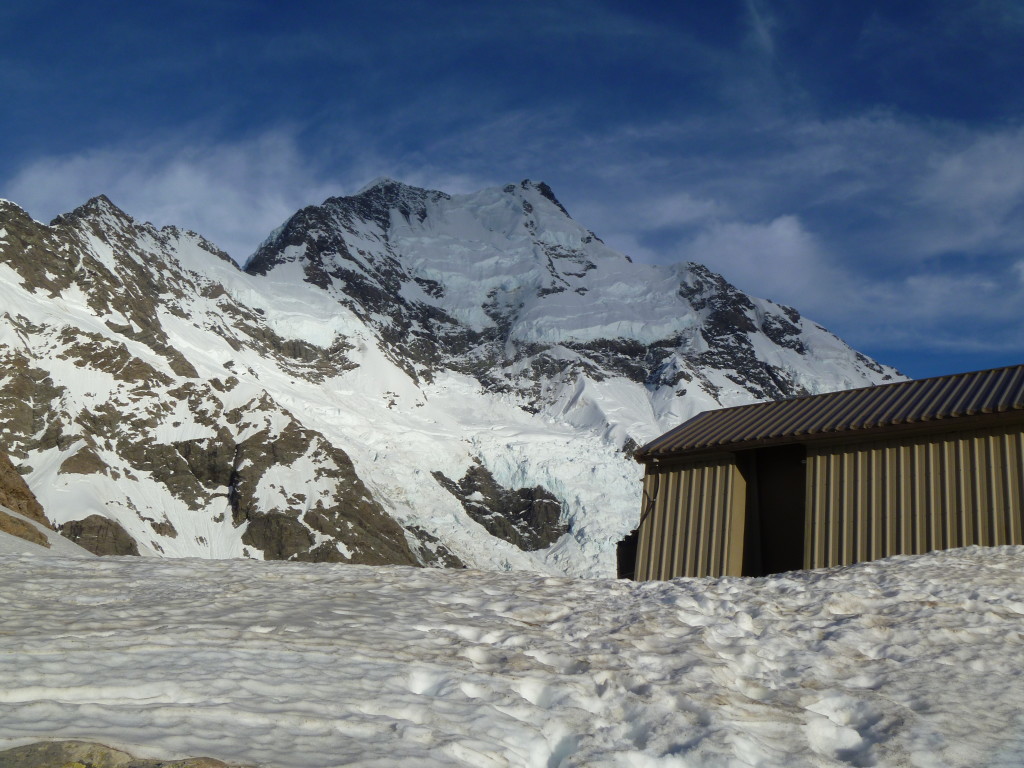
The third day brought a storm with gale force winds and heavy snowfalls, so we were hut bound. We used the time to go through theory on glaciology, snow and avalanche science, weather, as well as rope systems for glacier travel and crevasse rescue. You can never run out of things to learn about mountaineering.
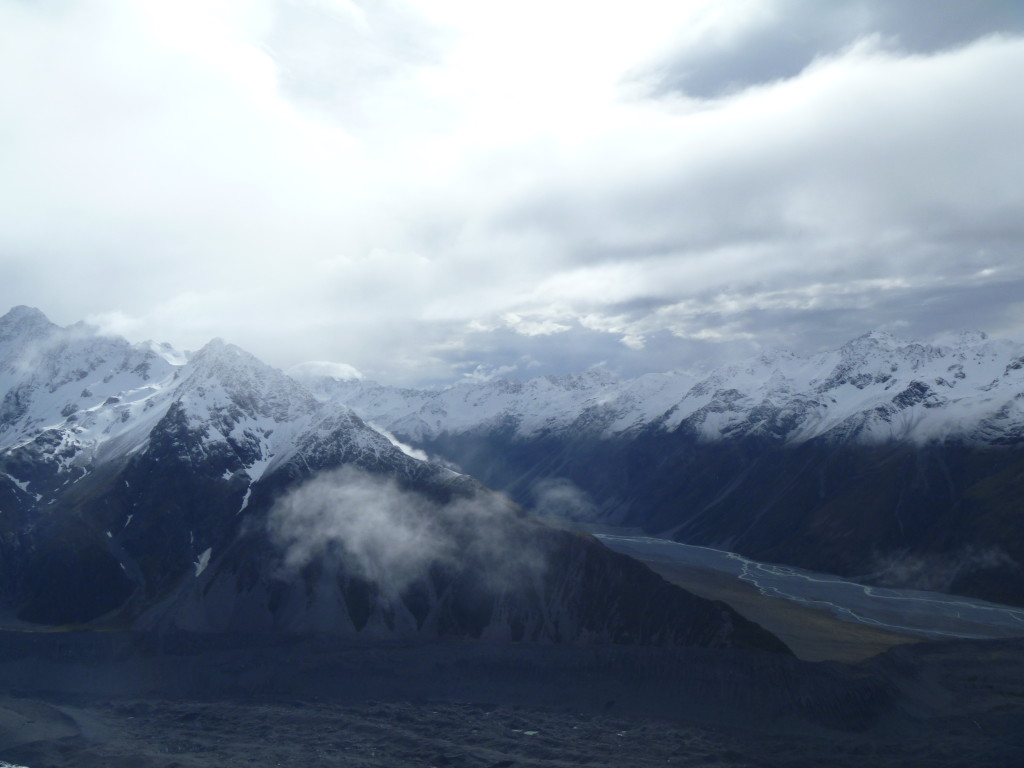

After our hut bound day, the sky cleared up but the snow conditions had obviously changed considerably. A quick snow stability test revealed a weakness in the snowpack existed between the new and old snow. We didn’t really need confirmation of the avalanche danger: thunderous sounds boomed continuously from the Caroline face of Aoraki, as she shed herself of the new unstable snow. We formulated the objective of ascending Kaitiaki Peak, but to do this we had to stick to ridge lines and stay out of the firing line of any avalanche pathways.
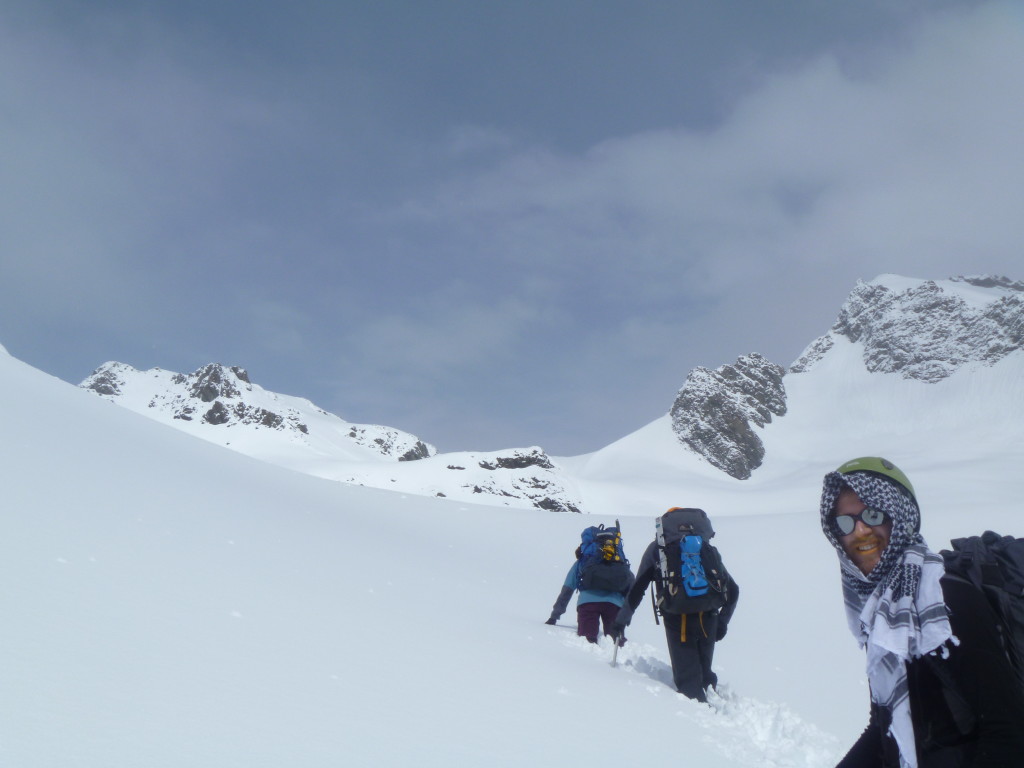
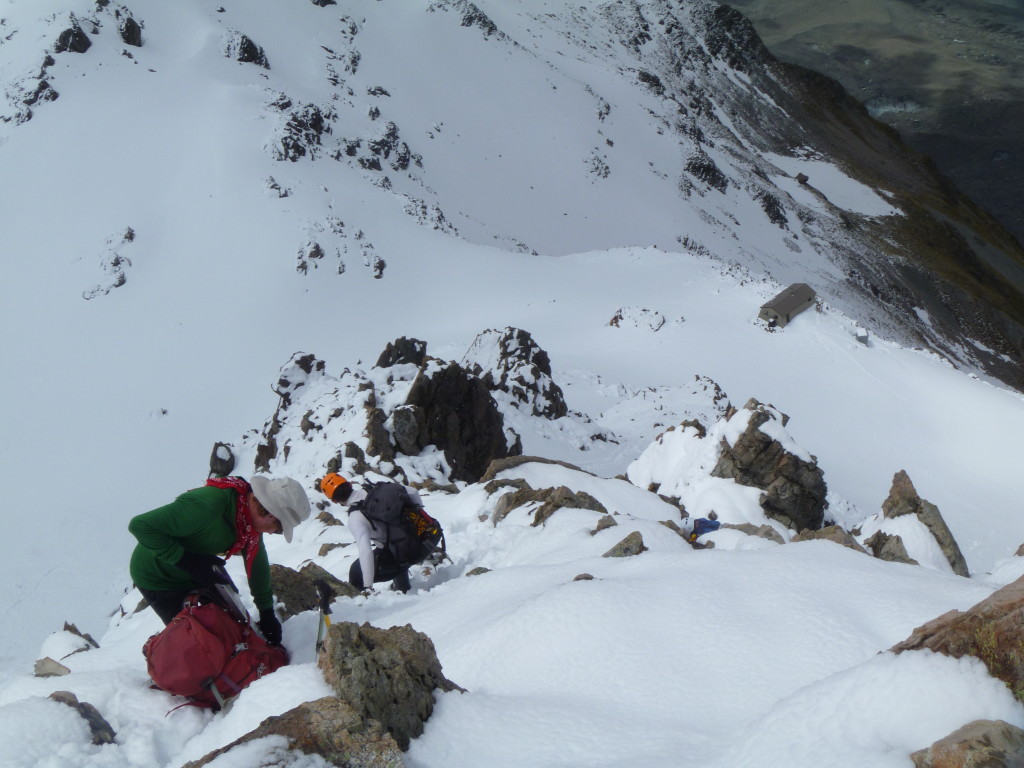

The new snow made ascending Kaitiaki more difficult than it would have been without it, as it was hard work boot packing a path to the summit. We did it over two days, making a boot-packed trail on the first day to make the approach on the second day easier.
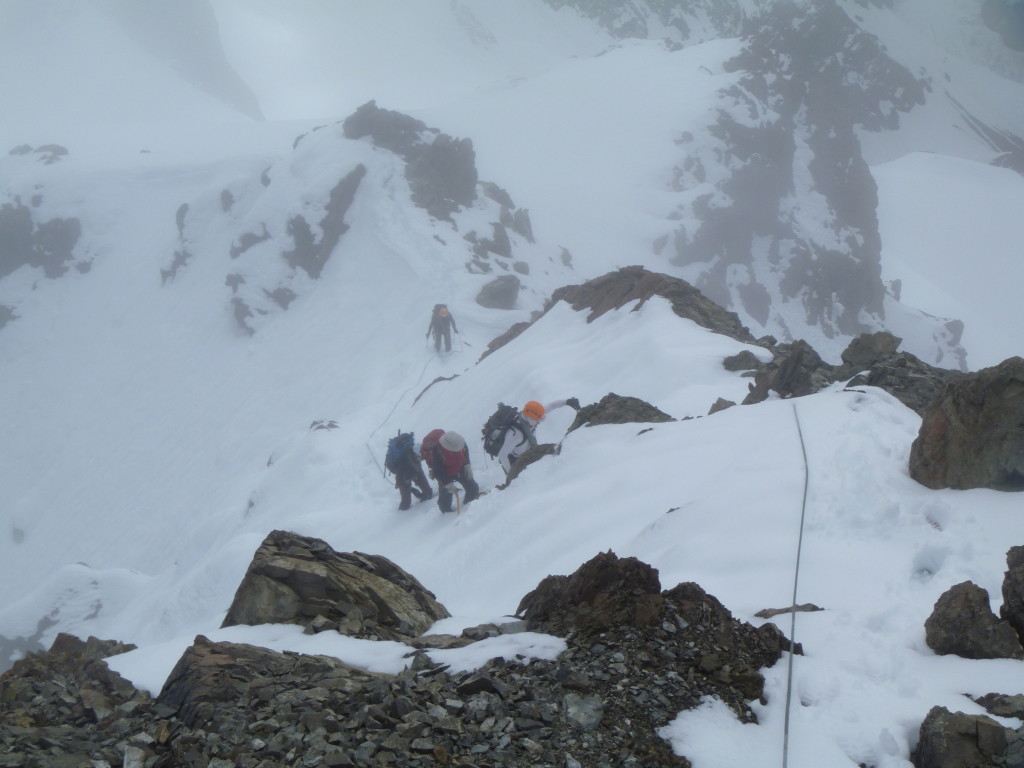


The second six day course began in the UNWIN lodge at Mount Cook Village. We were a party of 2 clients and one guide. We wanted to use the local helicopter service to fly to Tasman Saddle hut, but the weather proved too hostile to fly for the first two days. We used the time to go cragging at the newly developed Sebastopol Bluffs and go through some additional theory on mechanical advantage systems.
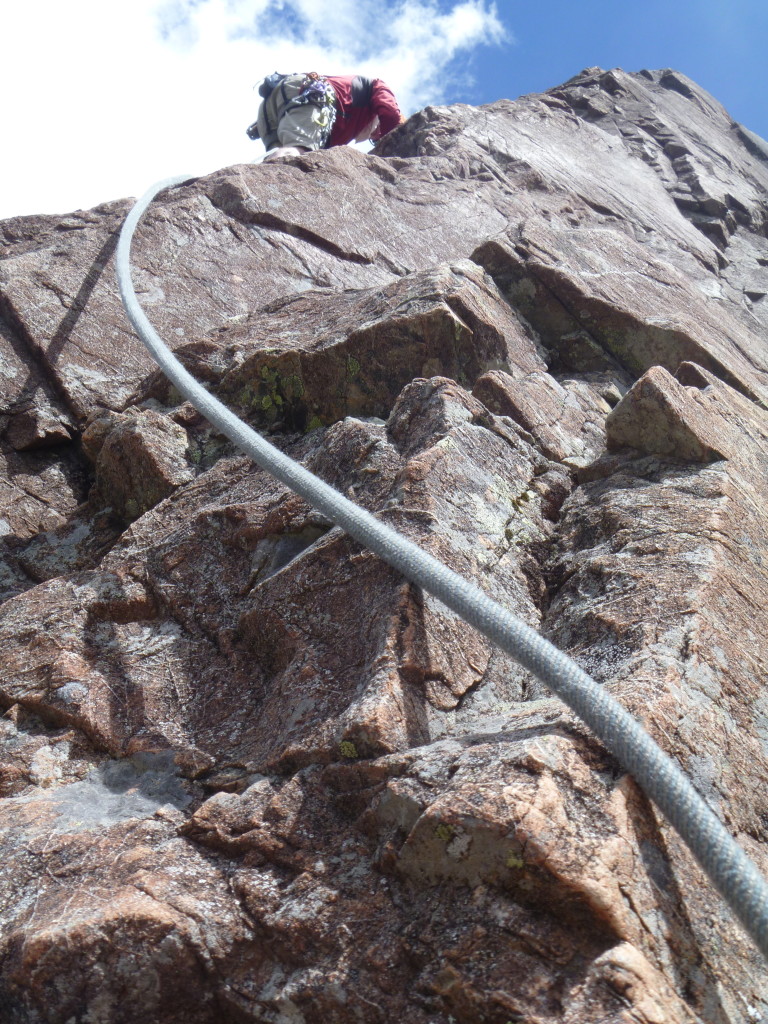
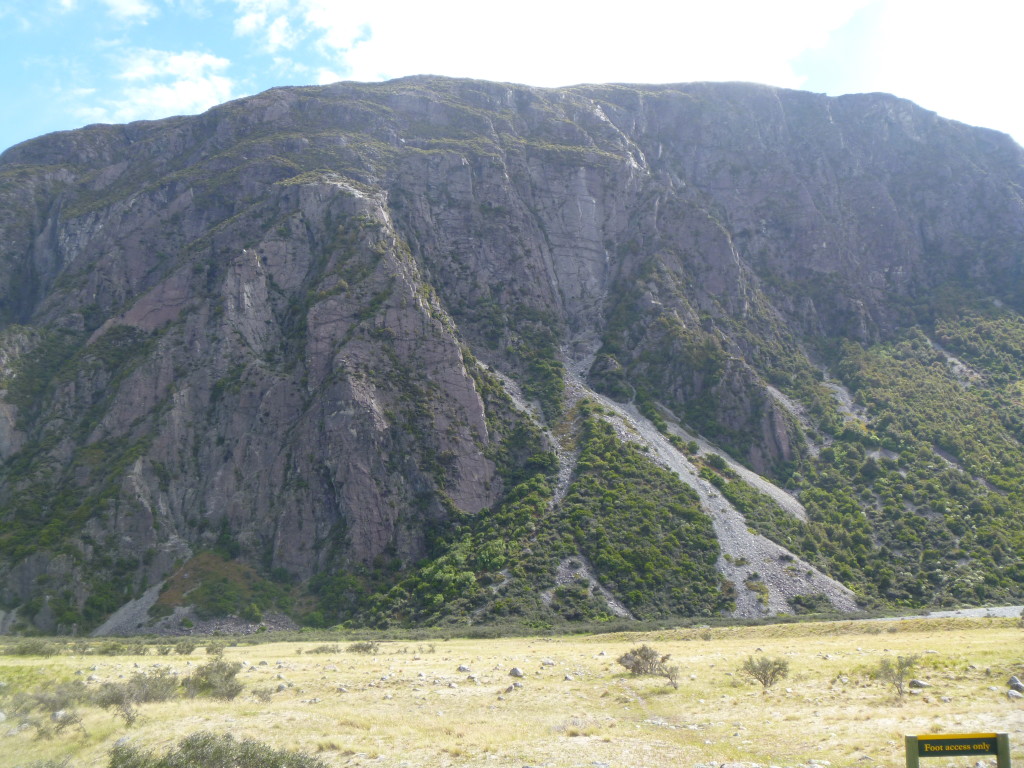
After waiting patiently for 2 days, there was enough of a break in the weather to fly to Plateau Hut, which was not quite as high as Tasman Saddle Hut. Though not as good a location for skills development, Plateau hut did afford the chance to practice glacier travel and some basic alpine rock. Plus, it was the usual launching pad for trips to some of the most serious peaks in New Zealand including Aoraki/Mt Cook, Mt Tasman, and Mt Dixon, so the views did not fail to inspire!
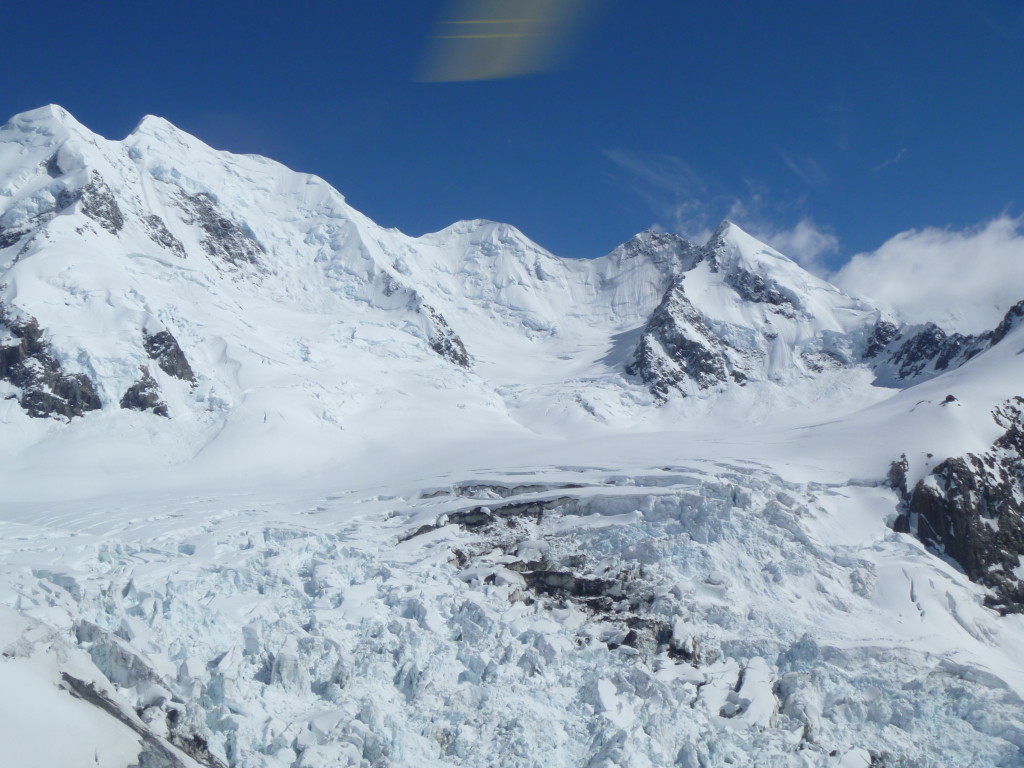
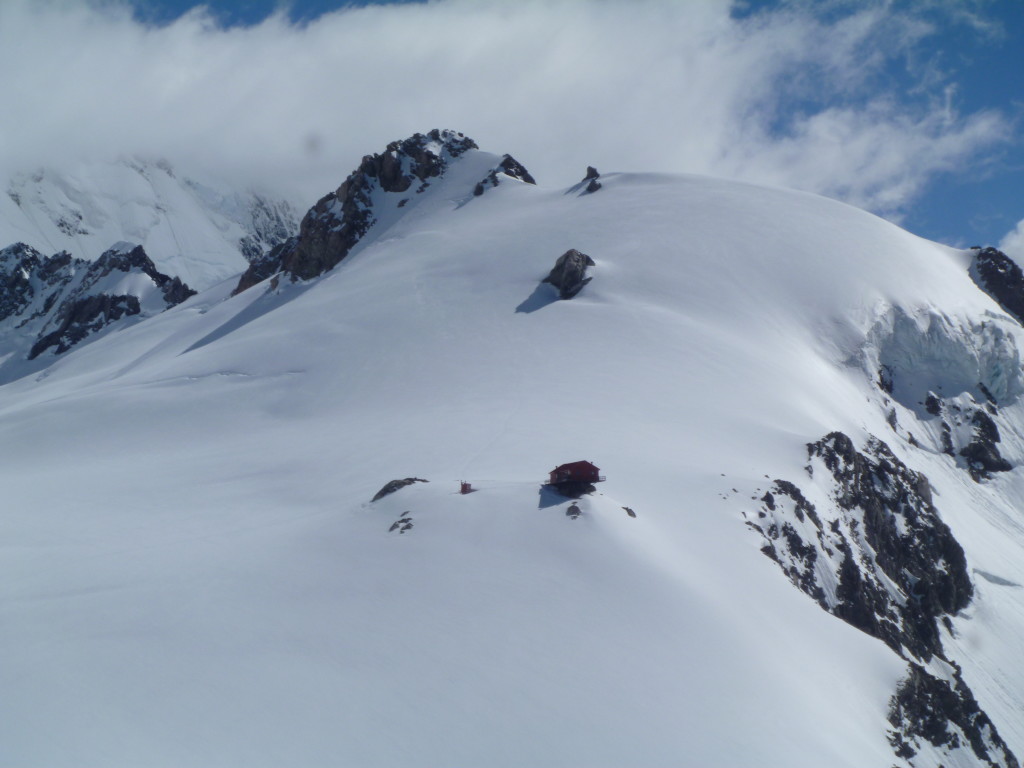
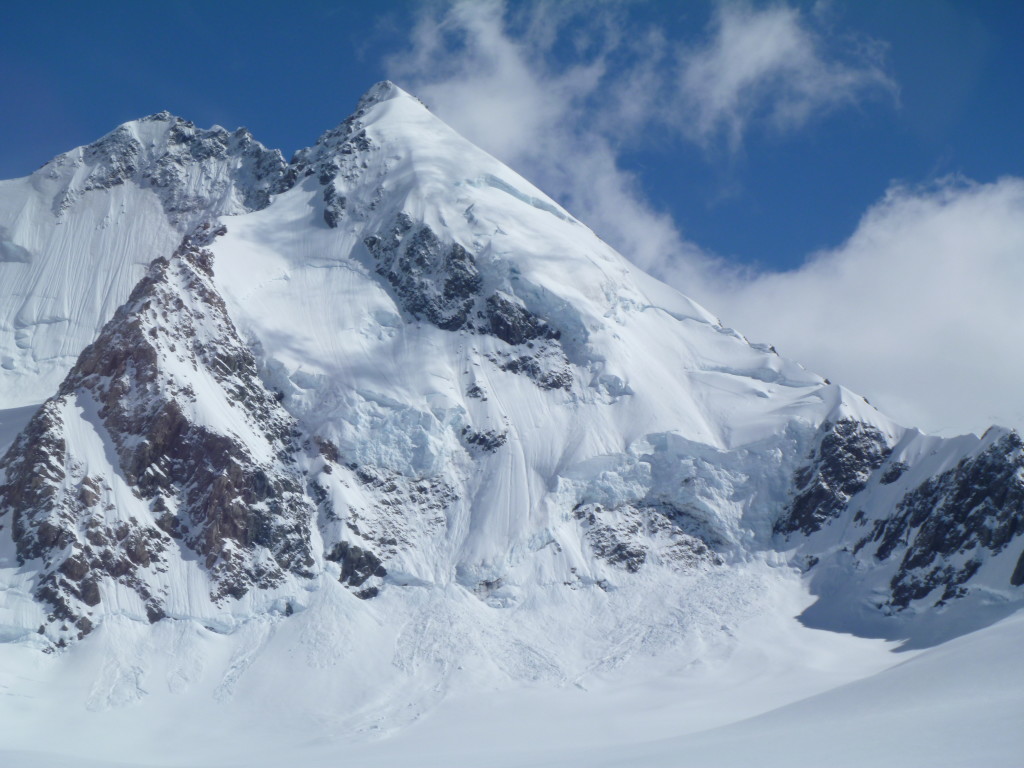
We didn’t waste time after flying in as the weather was still favourable. After dumping the majority of our stuff in the hut, we roped up to cross the Grand Plateau. We headed towards the Linda Glacier to find a large crevasse to go ice climbing in. Our guide made us alternate leads when crossing the glacier, so we were able to learn just how difficult and dangerous glacier travel is. The conditions on the névé made things especially hard: the previous week’s fresh snow still covered many of the slots, but the snow bridges were not strong enough to support our weight. Within the first ten minutes of leaving the hut I got stuck twice, falling up to my waist into two small crevasses. After that, I learnt to spot the slight depressions in the snow beneath which empty space usually lay, and became more efficient at stepping over the slots. Though I did not get stuck again after this, the experience was enough to teach me to never attempt to cross a glacier without being roped up to someone who knows how to rescue you if you fall into a void.

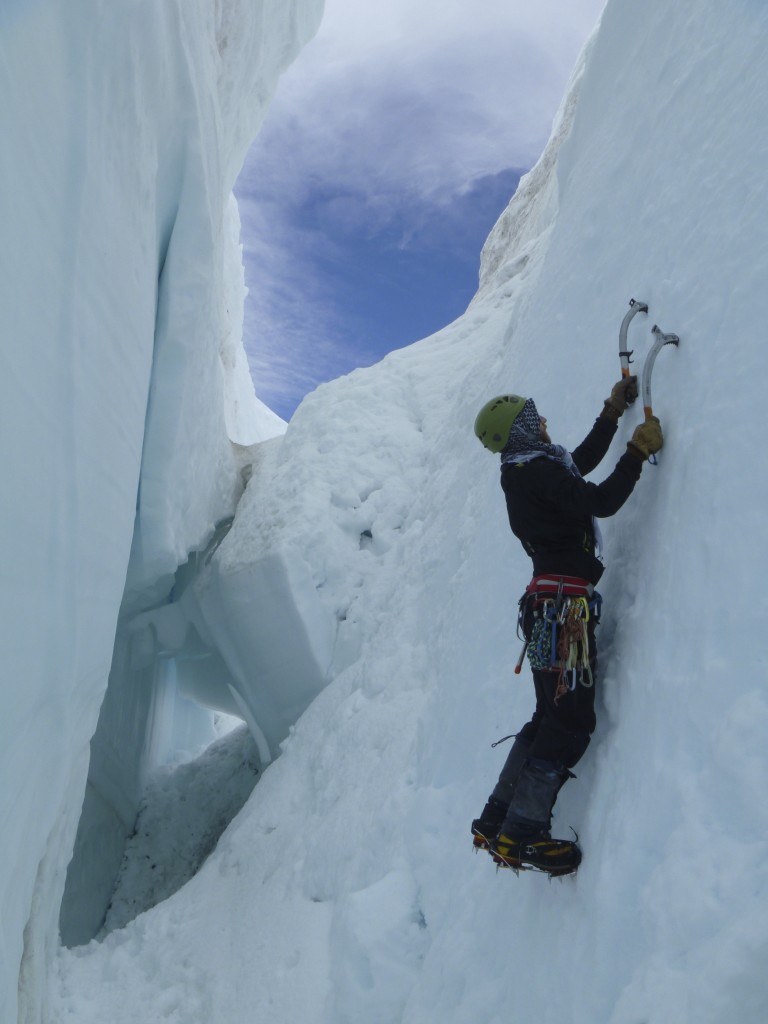
My camera ran out of battery after the above shots were taken. We had one more day of fine weather, during which we ascended the east Anzac Peak practicing alpine rock scrambling. The descent was a typical alpine escape, involving multiple abseils off of rock bollards and negotiating a small bergschrund. The rest of the course we had marginal or bad weather, so we were limited to only a small distance from the hut. We flew out on the sixth day with only a small weather window.
The following 3 weeks in New Zealand were fairly disappointing, as the weather deteriorated shortly after completing my training. I had some downtime in Wanaka and Queenstown, after which I went back to Mt Cook Village armed with two weeks of food, ready to head up to the Upper Tasman with my friends Frazer Baker and Michael Henningsen. However, low cloud, high winds and constant rain meant we were stuck in the UNWIN lodge and unable to access the alpine huts by helicopter or otherwise. This weather continued for the remainder of my time in NZ, with only half or quater-day weather windows. I managed to do a quick solo scramble up Mt Sebastopol on one day, before Frazer and Michael decided they had had enough and were going to head home.


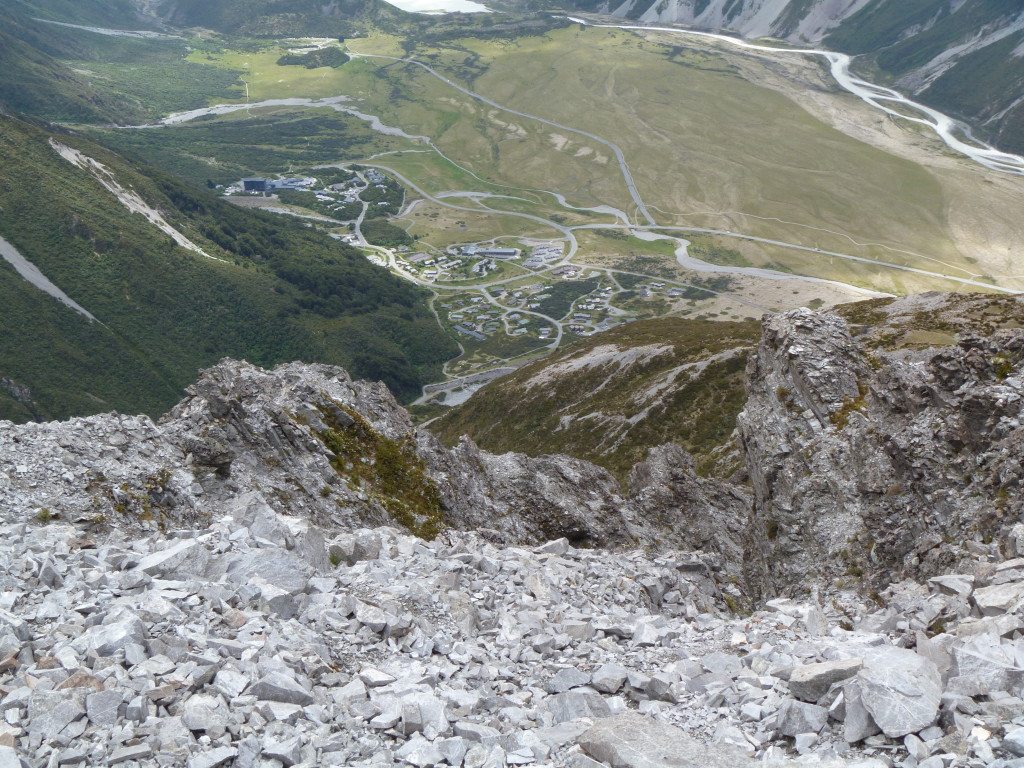
I decided to try and link up with Katy who I met on my first course, who wanted to do the Minarets from the west side of the main divide with her partner Mike. They were tramping in Westland and had let me know earlier that they wanted to go climbing afterwards. It was an effort getting all my gear and boxes of food over to Franz Josef without a car, especially on New Years eve with most hostels and buses booked out. I managed to make it there in 2 days via Christchurch and Arthurs Pass, in the hope that the weather would improve by the time I arrived. Unfortunately, it did not. I have never seen rain like the rain in Franz Josef. The first three days I was there it was dumping over 250mL every 12 hours. Rivers were raging, roads were closing, and obviously no one was going climbing. I made some good friends in the YHA and we laughed at ourselves as we got saturated head to toe trying to walk in to see the glacier.
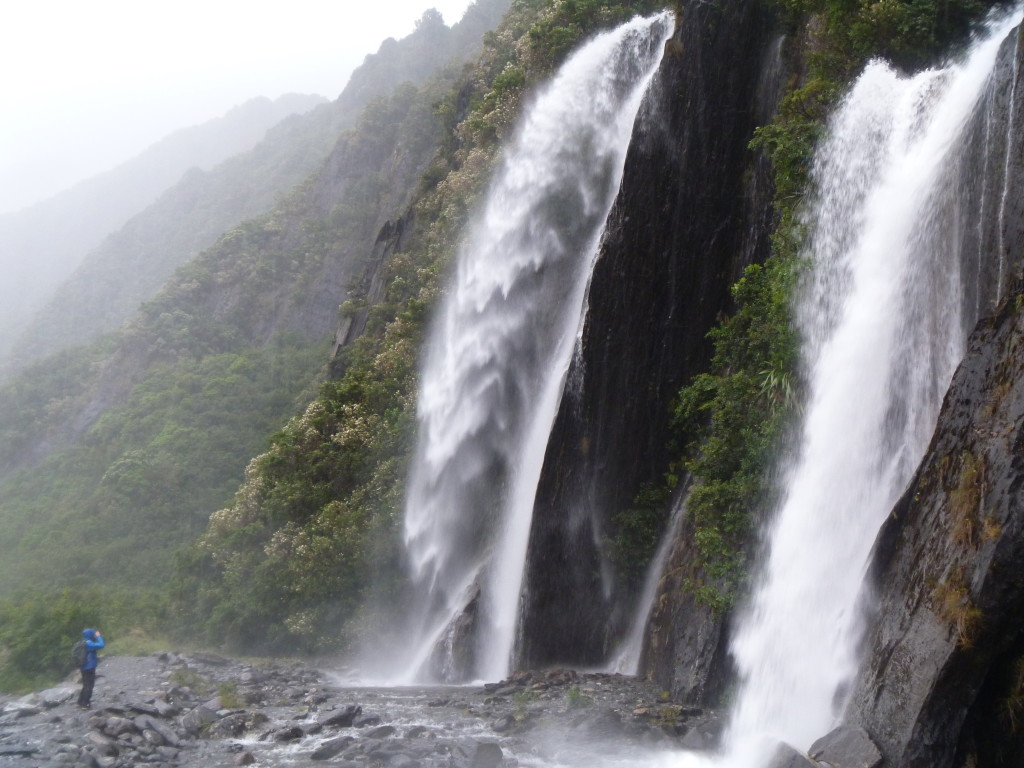
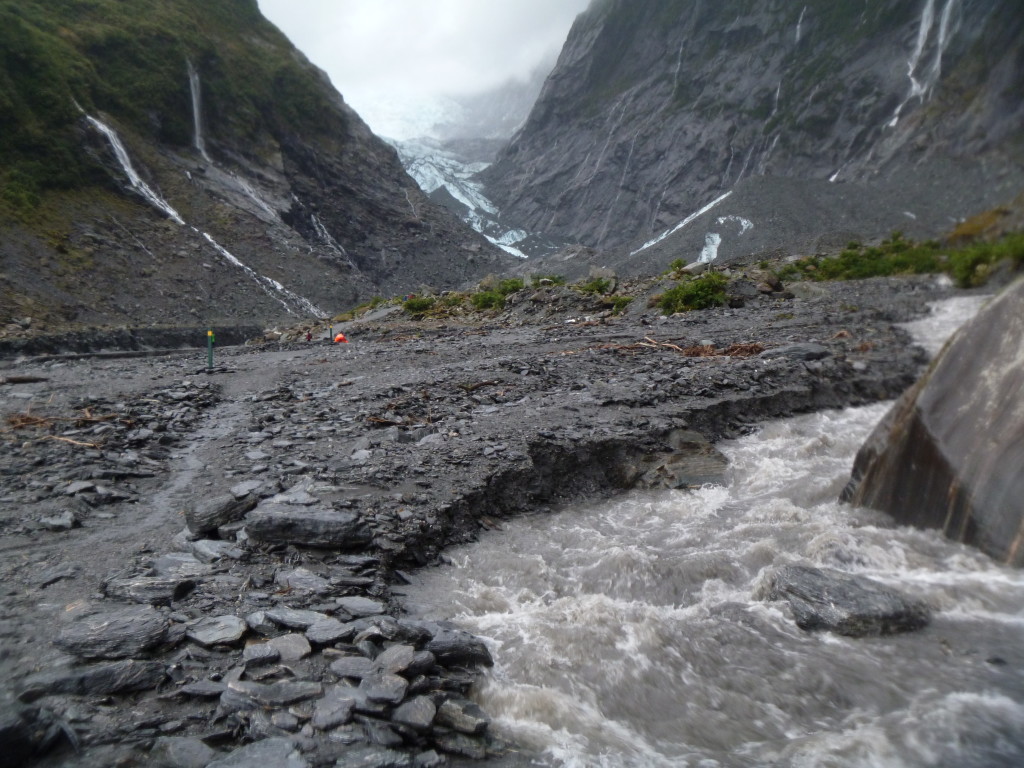
Shortly after this I received an invitation from Rob Baker to join him in Japan. The post from that trip may be found here. I leapt at the opportunity, having had enough of frustrating weather in New Zealand.
My first proper mountaineering trip was formative, for reasons I couldn’t have foreseen. Aside from the excellent introduction to the alpine environment given to me by the guides, I learnt from my experience that patience is not just a virtue in mountaineering, it is a necessity. Conversations with more experienced climbers afterwards revealed to me that whilst the weather I encountered was worse than average for the New Zealand summer, it was still nevertheless typical of what one can expect. Many a team have spent their entire trip sitting in huts, unable to achieve anything due to bad weather spells lasting 10 days without breaks. I have adjusted my attitude, and now accept the possibility that any climbing trip may not actually proceed further than the base of the mountain. It is more important to make safe decisions, come home alive, enjoy the adventure and make the most of the journey regardless of the outcome.
